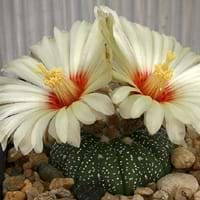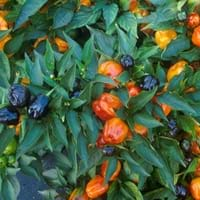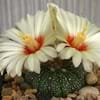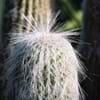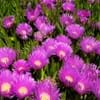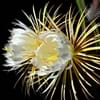Life Span
Perennial
Annual
Type
Cactus, Flowering Plants
Vegetable
Origin
Mexico, Texas
Hybrid origin, Mexico, Central America, South America
Types
Not Available
red bell pepper, yellow bell pepper, green bell pepper
Habitat
Desert, In desert grasslands, Rocky areas
Open areas
USDA Hardiness Zone
13-15
Not Available
Sunset Zone
21,22,23,24
A1, A2, A3, H1, H2, 1a, 1b, 2a, 2b, 3a, 3b, 4, 5, 6, 7, 8, 9, 10, 11, 12, 13, 14, 15, 16, 17, 18, 19, 20, 21, 22, 23, 24
Habit
Oval or Rounded
Oval or Rounded
Minimum Height
Not Available
Minimum Width
Not Available
Flower Color
Red, Yellow
White
Flower Color Modifier
Not Available
Bicolor
Fruit Color
Green, Pale Pink
Yellow, Green
Leaf Color in Spring
Not Available
Green
Leaf Color in Summer
Not Available
Dark Green
Leaf Color in Fall
Not Available
Dark Green, Black
Leaf Color in Winter
Not Available
Dark Green
Leaf Shape
Not Applicable
Elliptic
Plant Season
Not Available
Spring, Summer, Fall
Sunlight
Not Available
Full Sun
Growth Rate
Not Available
Fast
Type of Soil
Not Available
Loam
The pH of Soil
Not Available
Neutral
Soil Drainage
Not Available
Well drained
Bloom Time
Not Available
Indeterminate
Repeat Bloomer
Not Available
Yes
Tolerances
Not Available
Drought
Where to Plant?
Ground
Container, Ground, Pot
How to Plant?
Seedlings, Transplanting
Seedlings, Transplanting
Plant Maintenance
Medium
Medium
Watering Requirements
Needs very little water
Do Not over Water
In Summer
Lots of watering
Lots of watering
In Spring
Moderate
Moderate
In Winter
Average Water
Average Water
Soil pH
Not Available
Neutral
Soil Type
Not Available
Loam
Soil Drainage Capacity
Not Available
Well drained
Sun Exposure
Not Available
Full Sun
Pruning
Remove damaged leaves, Remove dead branches, Remove dead leaves
Remove damaged leaves, Remove dead branches, Remove dead leaves
Fertilizers
All-Purpose Liquid Fertilizer
All-Purpose Liquid Fertilizer
Pests and Diseases
Dry root rot, Root mealy bugs
Red blotch
Plant Tolerance
Drought
Drought
Flowers
Yes
Insignificant
Flower Petal Number
Not Available
Single
Showy Fruit
Not Available
Yes
Edible Fruit
Not Available
Yes
Fragrant Flower
Not Available
No
Fragrant Fruit
Not Available
Yes
Fragrant Leaf
Not Available
No
Fragrant Bark/Stem
Not Available
No
Showy Foliage
Not Available
No
Showy Bark
Not Available
No
Foliage Texture
Bold
Medium
Foliage Sheen
Not Available
Glossy
Invasive
Not Available
No
Self-Sowing
Not Available
Yes
Attracts
pollinators
Not Available
Allergy
Not Available
Hives, Rash
Aesthetic Uses
Beautification, Showy Purposes
Showy Purposes
Beauty Benefits
Not Available
Not Available
Environmental Uses
Air purification
Air purification
Medicinal Uses
Not Available
cholesterol-lowering, Low calories, Vitamin C
Part of Plant Used
Flowers
Fruits
Other Uses
Used as Ornamental plant
Used As Food
Used As Indoor Plant
Yes
No
Used As Outdoor Plant
Yes
Yes
Garden Design
Not Available
Edible, Herb / Vegetable, Tropical
Botanical Name
Astrophytum asterias
CAPSICUM annuum 'Admiral'
Common Name
Star Cactus, Sand Dollar Cactus
Admiral Pepper, Bell Pepper
In Hindi
रेत डॉलर कैक्टस
शिमला मिर्च
In German
Sand Dollar Cactus
Paprika
In French
Sand Dollar Cactus
poivron
In Spanish
Sand Dollar Cactus
Pimiento
In Greek
Sand Dollar Cactus
Πιπεριά
In Portuguese
Cacto do dólar de areia
Pimentão
In Polish
Sand Dollar Cactus
papryka
In Latin
Sand Dollar Cactus
Bell Pepper
Phylum
Magnoliophyta
Anthophyta
Class
Magnoliopsida
Eudicotyledones
Order
Caryophyllales
Solanales
Family
Cactaceae
Solanaceae
Genus
Astrophytum
Capsicum
Clade
Angiosperms, Core eudicots, Eudicots
Angiosperms
Tribe
Cacteae
Not Available
Subfamily
Cactoideae
Not Available
Number of Species
Not Available
Properties of Sand Dollar Cactus and Bell Pepper
Wondering what are the properties of Sand Dollar Cactus and Bell Pepper? We provide you with everything About Sand Dollar Cactus and Bell Pepper. Sand Dollar Cactus doesn't have thorns and Bell Pepper doesn't have thorns. Also Sand Dollar Cactus does not have fragrant flowers. Sand Dollar Cactus has allergic reactions like Not Available and Bell Pepper has allergic reactions like Not Available. Compare all the properties and characteristics of these two plants. Find out which of these plant can be used as indoor plant. If you are interested to decorate your house and garden, find out aesthetic uses, compare them and select the plant which will beautify your surrounding. Along with beautification, try comparing medicinal and edible uses of Sand Dollar Cactus and Bell Pepper and you can choose the plant having best and most benefits.
Season and Care of Sand Dollar Cactus and Bell Pepper
Season and care of Sand Dollar Cactus and Bell Pepper is important to know. While considering everything about Sand Dollar Cactus and Bell Pepper Care, growing season is an essential factor. Sand Dollar Cactus season is Not Available and Bell Pepper season is Not Available. The type of soil for Sand Dollar Cactus is Not Available and for Bell Pepper is Loam while the PH of soil for Sand Dollar Cactus is Not Available and for Bell Pepper is Neutral.
Sand Dollar Cactus and Bell Pepper Physical Information
Sand Dollar Cactus and Bell Pepper physical information is very important for comparison. Sand Dollar Cactus height is Not Available and width Not Available whereas Bell Pepper height is 60.00 cm and width 30.00 cm. The color specification of Sand Dollar Cactus and Bell Pepper are as follows:
Sand Dollar Cactus flower color: Red and Yellow
Sand Dollar Cactus leaf color: Not Available
Bell Pepper flower color: White
- Bell Pepper leaf color: Green
Care of Sand Dollar Cactus and Bell Pepper
Care of Sand Dollar Cactus and Bell Pepper include pruning, fertilizers, watering etc. Sand Dollar Cactus pruning is done Remove damaged leaves, Remove dead branches and Remove dead leaves and Bell Pepper pruning is done Remove damaged leaves, Remove dead branches and Remove dead leaves. In summer Sand Dollar Cactus needs Lots of watering and in winter, it needs Average Water. Whereas, in summer Bell Pepper needs Lots of watering and in winter, it needs Average Water.
